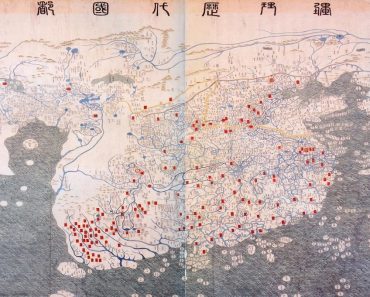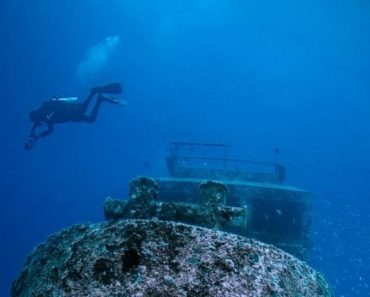A remarkable bronze warrior figurine has emerged from the soil of Bavaria, leading archaeologists to announce one of the most significant Celtic discoveries in recent years. The miniature masterpiece, discovered alongside more than 40,000 artifacts during extensive excavations at the Oppidum of Manching, provides unprecedented insights into the sophisticated metalworking skills and mysterious religious practices of ancient Celtic society.
The three-year excavation project, conducted between 2021 and 2024 by the Bavarian State Office for Monument Preservation in collaboration with Pro Arch Prospektion und Archäologie GmbH, has transformed our understanding of daily life in one of Central Europe’s most important Iron Age settlements. Measuring 7.5 centimeters (3.5 inches), the bronze figurine stands as the crown jewel among these discoveries, depicting a Celtic warrior in an unusual pose that has sparked intense scholarly debate.

The Celtic Warrior, now on display at (Bavarian State Office for the Preservation of Monuments)
A Warrior’s Enigmatic Design
The bronze figurine presents an intriguing archaeological puzzle. Standing in a dynamic lunging pose with sword in one hand and shield in the other, the warrior displays remarkable anatomical detail despite its diminutive size. However, what has captivated researchers is the figure’s distinctive attire: armored chest protection combined with complete nudity from the waist down.
“This 75-millimeter tall, 55-gram statuette is a very intricate and highly detailed piece,” explained Thomas Stöckl, a restorer at the Bavarian State Office for Monument Preservation, in the press presentation. The piece was crafted using the lost-wax casting technique, a sophisticated method that involves creating a detailed wax model, embedding it in clay, then melting out the wax and replacing it with molten bronze.
X-ray analysis conducted by the Bavarian State Office revealed the figurine’s solid bronze construction and confirmed the remarkable level of craftsmanship hidden beneath centuries of corrosion. A small loop on the warrior’s head suggests it may have served as a pendant, though scholars debate whether its function was decorative, religious, or ceremonial.

Left, figurine before conservation. Right, Xray of the figure. (Bavarian State Office for the Preservation of Monuments)
The partial nudity depicted in the figurine aligns with historical accounts of Celtic warriors serving as mercenaries in Greek armies, where nudity in art symbolized strength and valor. This artistic choice may reflect Celtic interaction with Mediterranean cultures, demonstrating the far-reaching trade networks that connected Manching to the broader ancient world.
Revealing Life in a Celtic Metropolis
The excavations have painted a vivid picture of urban planning and daily life in what was once Europe’s largest Celtic settlement north of the Alps. Covering an area of 6,800 square meters, the archaeological team documented 1,300 distinct features that reveal a carefully organized community with designated residential zones, specialized craft workshops, and sophisticated infrastructure.
Prof. Mathias Pfeil, General Conservator of the Bavarian State Office for Monument Preservation, emphasized the settlement’s significance:
“The richness of finds from the latest excavation tells us how the late Iron Age settlement was organized, how people lived, worked, and ate, with whom they had trade relations, and what technical skills they had developed.”
More than 15,000 metal objects were discovered, many representing the practice of recycling fragments from metalworking activities. These artifacts were systematically photographed using 2,034 X-ray images, providing researchers with unprecedented data about Celtic manufacturing techniques and materials before conservation work began.

Animal bones discovered during the excavation, providing evidence of Celtic dietary practices. (Bavarian State Office for the Preservation of Monuments)
For the first time at Manching, archaeologists discovered fish bones and scales, proving that the Celtic diet included not only beef, pork, and grain but also freshwater fish from the nearby Paar and Danube rivers. Analysis revealed that horses were primarily used for labor and only slaughtered in old age, while sheep and goats provided wool and milk rather than meat. These findings illuminate the practical and economic priorities of Celtic society.

Artisanal Celtic Cross, a symbol of faith and tradition deeply rooted in Celtic heritage, available from the Ancient Origins store.
Mysterious Ritual Deposits
Among the discoveries was a ritual deposit dating from 120 to 60 BC, found within what archaeologists believe was a ceremonial well. The deposit contained the remains of at least three human individuals, numerous animal bones from cattle, pigs, and sheep, 32 metal objects, and fragments from more than 50 ceramic vessels.
Sebastian Hornung, excavation director from Pro Arch Prospektion und Archäologie GmbH, described the find as “extraordinary” due to the recovery of two nearly complete human skeletons in a single archaeological context reports Arkeonews. Such ritual deposits offer tantalizing glimpses into Celtic spiritual practices, though their exact meaning remains largely mysterious.
The presence of both human and animal remains alongside valuable metal objects suggests complex ceremonial activities that may have involved sacrifice, offerings to deities, or commemorative rituals. These practices align with other evidence of Celtic religious traditions found throughout Iron Age Europe, highlighting the sophisticated spiritual life of these ancient communities.

Ritual deposit containing remains of at least three human individuals and numerous animal bones. (Pro Arch Prospektion und Archäologie GmbH)
Legacy of the Lost Celtic Capital
Manching’s story begins in the late 4th century BC, evolving into a major political and economic center by the 2nd century BC. At its peak around 140-130 BC, the settlement was fortified with massive defensive walls and sprawled across 400 hectares—larger than medieval Nuremberg. With an estimated population of up to 10,000 inhabitants, Manching represented the pinnacle of Celtic urban development.
The settlement’s prosperity was built on extensive trade networks, advanced metallurgy, and agricultural surplus. Archaeological evidence reveals connections with Mediterranean cultures, Germanic tribes, and other Celtic communities across Europe. However, by the middle of the 1st century BC, Manching began its gradual decline, with urban life eventually ending as populations dispersed to smaller settlements.
The site’s archaeological significance extends beyond the current discovery. In 1999, treasure hunters discovered a hoard of 483 gold coins and a 3.7-kilogram ingot – the largest Celtic coin hoard ever found in the region. Tragically, this treasure was stolen from the Manching Museum in 2022, with most of it likely melted down and lost forever despite the thieves having been caught and convicted.
Top image: The Celtic warrior statuette after restoration, depicting a warrior in lunging pose with sword and shield. Source: Bavarian State Office for Monument Preservation
By Gary Manners







